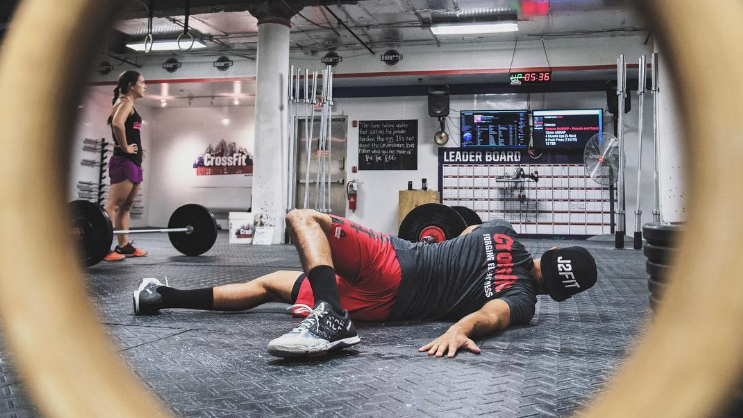11 Ways to Boost Physiological and Psychological Recovery from Brutal Workouts
While there are no shortcuts to building muscle, gaining strength, and recovering from exercise, there are some habits that can make or break your ability to train hard on a continual basis. Failure to master fundamental recovery habits will often leave you with heaping amounts of muscle soreness, hormonal imbalances, limited motivation and energy, and even injury.
[Join the free J2FIT online fitness and weightlifting community and receiving monthly training advice, coaching advice, workout ideas, and more! Subscribe today!]
11 Ways to Boost Recovery from Brutal Workouts
Below are 11 ways every fitness-goer, athlete, and coach should instill within their lives (and those of their clients/athletes) to improve overall fitness, health, and results.
1. Sleep
Without adequate sleep, your hormones, muscles, and cardiovascular and nervous systems (as well as all other systems of the body) will lack the ability to recover from hard training. Ideally, it should get at least 7 hours of sleep per night, while strength- and power-based lifters are encouraged to sleep more than 8 hours a night. If someone tells you that they don’t need that much sleep, or are recovering fine without it, they are either lying or not training hard enough to elicit progress. Get your sleep, or all of the other aspects of active recovery and rest days will be meaningless.
2. Hydration
Dehydration, which sets in very easily during intensive training, can have a huge impact on blood circulation, muscle and connective tissue health, brain function, and recovery. You should drink at least ¾ of a gallon of water per day, or more--for example, I drink well over one gallon of water per day. Reduced intakes of water is likely to result in limited recovery, an increased risk of injury, and it may leave you feeling bloated, overweight, and sluggish.
3. Light Stretching + Foam Rolling
Light stretching and foam rolling are great ways to release muscle tension and restore range of motion after hard workout sessions. It is best done after training sessions (every day is optimal) since you are already warm. Try this 15-minute mobility/flexibility workout, which can help to kickstart the recovery process which can help you ward of the compounding soreness at the end of the week.
4. Eat Enough Calories
Without consuming enough calories (specifically carbohydrates and protein), your body and nervous system will be unable to recover or build muscle tissue. I often see athletes and clients who are under eating and wondering why they sleep poorly, hold on to their body fat (despite their workout schedule), and are in a state of soreness on a regular basis. Working out with the purpose of building strength and muscle hypertrophy (which if so, be sure to take a look at our 9-Week Strength + Hypertrophy Cycle), and fitness is taxing on the body, and requires high amounts of energy. Calories are the fuel that supplies that energy.
5. Light Aerobic Exercise
Doing light aerobic exercise like biking, rowing, or walking before or after a workout session can increase joint and muscle tissue health by improving blood flow circulation and elevating the body’s core temperature. Additionally, when done after a workout, this can help to flush out any metabolites that accumulate within muscle tissues that may also be responsible for delayed onset muscle soreness.
6. Limit Alcohol
Increased alcohol consumption may also be a reason you cannot recover as well. Alcohol negatively impacts sleep quality (despite sleeping longer), blunts hormones production, increases body fat, and dehydrates the body. Be sure to take this into account when looking to maximize your performance.
7. Limit Painkillers
Studies have indicated that acetaminophen and ibuprofen dosing for muscle soreness can actually decrease protein synthesis and muscle growth. While painkillers can help you temporarily get over muscle soreness, the chronic use of painkillers to treat soreness can actually diminish your muscle and strength gains. When you pop a painkiller, you in turn limit the amount of protein synthesis that occurs after a hard training session. The same markers in the body that produce muscle soreness are the same ones that increase protein synthesis and muscle growth. If you limit one, you diminish the other.
8. Light Physical Activity (Lifestyle)
If you find yourself sore (or simply not as fit as you would like), start mixing in light physical activity into your daily, non-gym life. Simple acts like short walks around the office at lunch, meditation, stretching sessions, and even taking the stairs can increase your overall physical fitness and ability to recover.
9. Active Recovery Workouts
In a previous article we discussed the definition of active recovery and how it differs from a rest day. In short, active recovery days can be used to help restore proper movement, increase blood flow, and allow you to build in flexibility/mobility training into a program. Additionally, the article offered lifters three (3) active recovery workout ideas that can be done in most gyms or on the go.
10. Follow a Legit Workout Program
This may seem a little obvious, but if your program has ungodly amounts of volume, poor balance (between muscle groups) and consistently is wearing you down, there will be close to a zero chance of proper recovery. If you are someone who is consistently getting injured, has no energy, and can't seem to gain strength, muscle, or fitness (and you are mastering all the above recovery habits) it is most likely due to a bad program :/ Sorry, someone has to say it.
11. Electrical Muscle Stimulation (EMS) -
Electric muscle stimulation (EMS), also referred to as neuromuscular electrical stimulation (NMES), uses electrical signals at higher Hz rates to stimulate muscle fibers to contract. These muscle contractions increase blood flow as well as nutrient distribution, and additionally can recruit more muscle fibers than a standard warm up or workout. It is for these reasons (and the ones below) that athletes and coaches alike use EMS to help the body to recover faster, increase muscular strength and endurance, and reduce the risk of muscular injuries.
Personally, I recommend and have been using the PowerDot 1.0 and 2.0 for the past two years, and have seen great improvements in how I am able to respond to heard training, recover faster, and minimize muscle pain/spasms. if you are looking for an EMS device, I strongly advice going with PowerDot, as it is an FDA approved NMES (EMS) device!
***Disclaimer***
While this is not a sponsored article, we do collect a percentage of commission from PowerDot for any sales coming from the below link. This is at not cost to our readers or their customers. We want to be 100% transparent in our partnerships, and hope that you see why we have strategically partnered with PowerDot for our EMS and recovery needs.
Attack Recovery Like You Attack Your Workouts
As you progress wit your training, nutrition, sleep, and recovery will seperate medoicre and beginner gains with long-term success. Be sure to comment below with questions or suggestions for any other aspects of recovery you want to learn more about. I will get back to you (or maybe even write an article about your question)!
PS, if you liked this article, AND want to politely let your friend know they recovery poorly, send this their way by sharing on Facebook, Reddit, Twitter or Instagram :)

